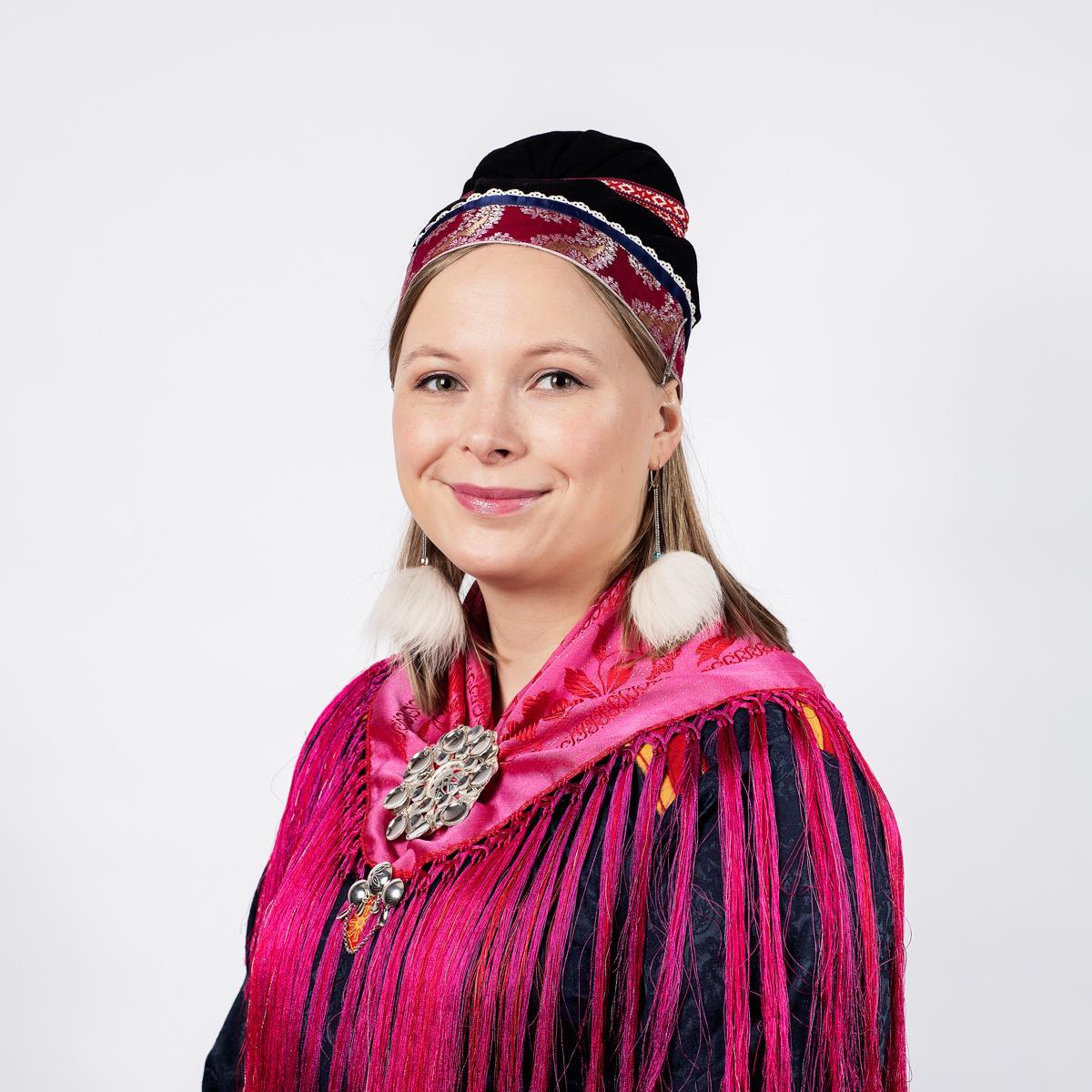 Sandra Márjá West
Árvu/Sametinget
Sandra Márjá West
Árvu/Sametinget
Buorre eahket buohkaide ja giitu bovedhusas boahtit jaskesfilmmabeivviide Romssas.
Good evening, everyone and thank you for the invitation to come to Tromsø Silent Film Days.
Tromsø Silent Film Days has established itself an exciting film festival here in Tromsø. I am particularly pleased with this year's program which focuses on silent films that depict Sápmi or contain Sámi characters.
Some of the silent films that will be shown during these not-quite-silent days might have been shown here at Verdensteatret, around 100 years ago. Back then, the cinema was quite new, and the audience got a taste of the world through moving images and live music.
What was it like to be Sámi in this Region 100 years ago, and how were Sámi portrayed on film and in other stories at that time?
100 years ago, we were still in the peak period of the Norwegianization policy, the term which describes the public policy that the Norwegian authorities pursued to assimilate the Sámi and other minorities into Norwegian society.
From being a place with visible Sámi presence, the reindeer herding Sámi, who migrated with their reindeer herds to the Swedish side of Sápmi in the winters and to the coast of Troms in the summers, were expelled from this Region in the 1920`s. From then on, it was forbidden for the Sámi people to cross the borders between Norway and Sweden with their herds. This was one of several means of "expelling" the Sámi from Tromsø. Many places around Tromsø were inhabited by Coastal Sámis, but in a relatively short time, both the Sámi language and Sámi culture were abandoned to become as Norwegian as possible.
Tromsø had its own segregation system put into practice where city dwellers were allowed to walk on the upper part of Storgata, while the so-called "bonan", including the Sámi, had to walk on the lower part, otherwise you could get literally beaten up.
The Norwegianization policy also affected how the Sámi were portrayed in books and films, which was often from an outsider point of view and with strong racist undertones, such as in the book and film Markens Grøde by Knut Hamsun, or there was the exoticizing variant, such as in the film By Sledge and Reindeer in Inka Länta's Winterland. What the portrayals have in common is that they bear the mark of both ignorance and prejudice.
It is painful to look at it now in retrospect, and many Sámi are still struggling with the consequences of the brutal and efficient Norwegianization policy. This was highlighted by the Truth and Reconciliation Commission’s report that was published two years ago.
I am happy that TIFF has chosen to take part in the conversation about how to repair the damages of the Norwegianization policy. To achieve reconciliation, we need the whole society with us, Sámis are not able to do it alone.
My boss, the president of the Sámi Parliament, always says: “when it’s hot, the instinct is to draw away, but instead we should move closer and look into why it’s so hot and what can be done.”
This is excactly what TIFF has chosen to do when they have programmed Markens grøde and By Sledge and Reindeer in Inka Länta’s Winterland and invited sámi musicians to make a new soundscape for the film. By letting young Sami musicians create their own sound, they put the films in a new context and gives us the opportunity to encounter the same performances in a slightly different way, and not least that by doing so one can also take Sámi ownership of these old stories and representations of the Sámi people. How will these films sound in 2025? You will soon find out.
In 100 years, a lot has changed. Tromsø has become a better place to live for Sámi people, and the cultural representations of Sámi people is starting to get present and visible again and the Sámi stories are now developing to a greater extent on Sámi terms.
Now, that is reconciliation in practice! I wish you an excellent film experience and good conversations after.
Dakko bokte lea Romssa jaskafilbmabeaivvit rahppon!
With these words, I declare Tromsø Silent Film Days 2025 open!
Giitu!